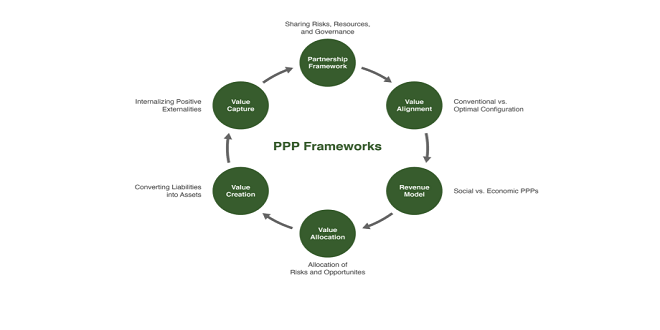Introduction
A public-private partnership or PPP in healthcare is a collaboration between a government agency and a private-sector company that may be used to build, finance, and operate healthcare projects and centers.
PPPs help in addressing the healthcare accessibility challenges by making the private sector expertise and services available in the remote public sectors, use of technology-driven practices like telemedicine, and ensuring that the existing resources and infrastructure are used optimally to provide affordable medical facilities to everyone.
Healthcare Accessibility Challenges
Basic medical facilities are a right of every individual, regardless of the person’s location and financial status. However, the healthcare services are usually not accessible to everyone. Some of the key healthcare accessibility challenges are:
- High cost of medical care
- Transportation problems for people living in remote or rural areas
- Lack of awareness regarding the importance of healthcare
- Lack of infrastructure and resources in remote areas
- Lack of skilled medical professionals in remote areas
Most of these healthcare challenges are faced by people living in remote areas, making it difficult for them to obtain accessible and affordable medical facilities.
Advantages of Public-Private Partnerships
Public-private partnerships offer several benefits over public-sector health resources. The benefits of public-private partnerships are as follows:
- Expertise of the private sector: Private sector’s expertise and management skills in creating and running successful organizations can help in revamping medical facilities.
- Affordability: PPP models generally follow the high-volume and low-margin policy to provide high-quality medical facilities at an affordable cost.
- Use of new-age technology: The use of the latest innovative technology, such as telemedicine, by the private sector can help in making medical services more accessible to rural areas.
- Finance: The involvement of the private sector can help in building some of the best medical facilities that help benefit the smaller towns and cities.
- Availability of specialist doctors: The collaboration between the government and the private sector ensures that the specialist doctors are paid well and provided with all the necessary facilities to provide their services to the urban and rural areas.
- Efficiency: PPP models ensure the smooth and efficient running the medical centers.
Types of Public-Private Partnerships in Healthcare
There are different types of PPPs based on the function that they need to carry out.
Infrastructure Development
These PPPs are involved in designing the infrastructure and healthcare delivery model as well as the construction and renovation of the medical facilities included in the project.
Service Delivery and Management
These PPPs help in the delivery and management of specific clinical support services.
Skill Development and Training
These PPPs focus on developing and training the skills of the local people to make them a part of the medical support team.
Case Studies of Successful Partnerships
There are many examples of successful PPPs that have helped in improving the accessibility of healthcare services worldwide. A few examples of successful PPPs worldwide include:
The Chiranjeevi Yojana in Gujarat, India
The maternal health and death of the mother while giving birth is a major public health problem in India. About 1.2 million children are estimated to be born in Gujarat every year. Approximately 2,064 of these mothers die due to maternal causes, most of which are due to lack of funds, delivery by non-skilled people, and lack of emergency treatment services. The Chiranjeevi Yojana Scheme developed in Gujarat focuses on providing emergency maternal care to new mothers.
The scheme encourages families below the poverty line (BPL) to access institutional child delivery at a private hospital. The scheme provides financial assistance to the BPL card holders and even the accompanying person for loss of wages.
PhilHealth in the Philippines
PhilHealth or the Philippine Health Insurance Corporation launched PPP schemes with many big names in the business sector in the year 2011 with the support of Universal Health Care or the Department of Health agenda of Kalusugan Pangkalahatan.
The PPPs are designed in a way to encourage more people to become members and help PhilHealth improve its healthcare services for the members.
Western Cape Department of Health, South Africa
The Western Cape Department of Health in South Africa has collaborated with civil society to reduce the spread of tuberculosis (TB) in South Africa.
The PPP focuses on increasing awareness of TB being the primary cause of death in South Africa, prevention of new TB infections, quick and improved diagnosis of TB, early treatment plan, adherence to treatment till the condition is cured completely, and the mobilization of the government and society in general to tackle TB. The PPPs aim to implement these steps to end TB in South Africa by 2035.
Benefits and Outcomes
The implementation of PPPs has had several positive outcomes for healthcare services worldwide. Some of the benefits of these PPPs are:
Enhanced Healthcare Access
The PPPs have made healthcare services accessible to not just the urban population, but also the rural population worldwide.
Improved Service Quality
The quality of medical services provided in remote areas has improved significantly due to the use of advanced technology and training of the medical support staff.
Cost Management and Sustainability
The PPPs work cost-effectively without affecting the quality of services offered. This helps improve their sustainability in the long run.
Challenges and Mitigation
The public and private sectors both have to overcome a few challenges while adopting the PPP models. Some of the key challenges are:
- Inadequate financial resources
- Inadequate government guidelines and non-compliance with the guidelines
- Improper implementation of the guidelines for treatment procedures
- Poor communication between government and private sectors
- Lack of trust between the public and private sectors
Ujala Cygnus Varanasi Hospital helps in providing affordable and accessible medical care to remote areas across 20 hospitals in five Indian states with the help of PPP. It offers intensive care at costs that are 20% less than the cost at private hospitals.
Ujala Cygnus Hospitals focuses on high-volume, low-cost hospital models to make healthcare services financially accessible through its PPP.
Future Potential and Recommendations
Ujala Cygnus Hospitals claims to be the first hospital across India to adopt the Aayushman Bharat Yojana, which is a national public health insurance scheme of the Indian Government aiming to provide free access to the health insurance coverage for the low-income group of the country. This PPP has benefited the citizens of India considerably.
Another PPP of Ujala Cygnus is Sehat Chaupal, in which all the 20 hospitals visit the villages at least one or two times a year to screen people for conditions like diabetes, hypertension, eye diseases, and tuberculosis.
Ujala Cygnus is planning to open hospitals in four more Indian states shortly and is working on collaborations with the public and private sectors to provide accessible and affordable healthcare facilities to the underprivileged.
Conclusion
The development of PPPs across the world has helped in improving healthcare accessibility in a major way. Although the PPPs come with their own set of challenges, the benefits outnumber the challenges.
Governments across the world are in the process of collaborating with private sectors to form innovative PPPs to make healthcare services accessible to all.
 BESTCITYTRIPS
BESTCITYTRIPS




